Pressure sensors for installing underwater which are constructed to prevent water entering sensitive components and causing damage to the sensor. Underwater pressure sensors are IP68 rated for permanent use underwater to a specified maximum water depth.
Products
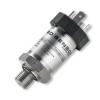 DMK457 Marine Approved Pressure Transmitter - Marine approved pressure transmitter with 4-20mA current loop output for shipbuilding with optional CuNiFe housing for sea-water compatibility
DMK457 Marine Approved Pressure Transmitter - Marine approved pressure transmitter with 4-20mA current loop output for shipbuilding with optional CuNiFe housing for sea-water compatibility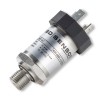 DMP457 Marine Approved Pressure Transmitter - Marine approved stainless steel diaphragm pressure transmitter with 4-20mA current loop output for shipbuilding in ranges from 100mb to 600 bar gauge or absolute.
DMP457 Marine Approved Pressure Transmitter - Marine approved stainless steel diaphragm pressure transmitter with 4-20mA current loop output for shipbuilding in ranges from 100mb to 600 bar gauge or absolute.
 SSPT Subsea Wet-Mateable Electrical Connector Pressure Sensor
SSPT Subsea Wet-Mateable Electrical Connector Pressure Sensor LMK 487 Submersible Ballast Tank and Draught Level Pressure Transmitter
LMK 487 Submersible Ballast Tank and Draught Level Pressure Transmitter LMK387 Cleanable Sewage and Sludge Pressure/Level Sensor
LMK387 Cleanable Sewage and Sludge Pressure/Level Sensor
Applications
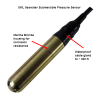 300 foot sea depth waterproof pressure sensor with 0-5V signal - Waterproof submersible pressure sensor for lowering to ~300 feet below sea level.
300 foot sea depth waterproof pressure sensor with 0-5V signal - Waterproof submersible pressure sensor for lowering to ~300 feet below sea level.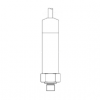 NPSH 4-22 psia 4-20mA filtration pump suction port pressure sensor for water treatment - An absolute pressure sensor for water treatment pump chamber use to measure filtration pump NPSH pressure of freshwater over a range of 4 to 22 psi abs from the G1/4 male process connection, and sending the corresponding 4-20mA signal through the submersible cable electrical connection.
NPSH 4-22 psia 4-20mA filtration pump suction port pressure sensor for water treatment - An absolute pressure sensor for water treatment pump chamber use to measure filtration pump NPSH pressure of freshwater over a range of 4 to 22 psi abs from the G1/4 male process connection, and sending the corresponding 4-20mA signal through the submersible cable electrical connection. Ground water flooded pit 40mH2O 4-20mA output freshwater pressure sensor for water treatment use - A ground water flooded pit gauge pressure sensor for water treatment use to measure pressure of freshwater over a range of 0 to 40 mH2O g from the G1/4 male process connection, and sending the corresponding 4-20mA signal through the submersible cable electrical connection.
Ground water flooded pit 40mH2O 4-20mA output freshwater pressure sensor for water treatment use - A ground water flooded pit gauge pressure sensor for water treatment use to measure pressure of freshwater over a range of 0 to 40 mH2O g from the G1/4 male process connection, and sending the corresponding 4-20mA signal through the submersible cable electrical connection. Vacuum insulation 15 psi absolute range millivolt output pressure sensor for air extraction use - An absolute pressure sensor for vacuum insulation air extraction use to measure vacuum pressure of air over a range of 0 to 15 psi abs from the G1/4 male process connection, and sending the corresponding mV/V signal through the submersible cable electrical connection.
Vacuum insulation 15 psi absolute range millivolt output pressure sensor for air extraction use - An absolute pressure sensor for vacuum insulation air extraction use to measure vacuum pressure of air over a range of 0 to 15 psi abs from the G1/4 male process connection, and sending the corresponding mV/V signal through the submersible cable electrical connection.
 1 barg IS certified 4-20mA submersible leachate pressure sensor for tank level gauging use
1 barg IS certified 4-20mA submersible leachate pressure sensor for tank level gauging use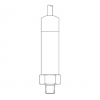 10 psig 4-20mA out submersible freshwater pressure sensor for underwater structure research
10 psig 4-20mA out submersible freshwater pressure sensor for underwater structure research 10 kPa g range 0-5Vdc output submersible freshwater pressure sensor for water treatment use
10 kPa g range 0-5Vdc output submersible freshwater pressure sensor for water treatment use 10mH2O absolute 4-20mA marine approved seawater pressure sensor for bilge water leak testing use
10mH2O absolute 4-20mA marine approved seawater pressure sensor for bilge water leak testing use 5 barg range 4-20mA output submersible seawater pressure sensor for measuring sea level
5 barg range 4-20mA output submersible seawater pressure sensor for measuring sea level Sea water desalination system offshore submersible pressure transmitters
Sea water desalination system offshore submersible pressure transmitters Fresh water compatible submersible 1mH2O range 4-20mA output pressure sensor
Fresh water compatible submersible 1mH2O range 4-20mA output pressure sensor 6 metre deep river level transducer with millivolt output
6 metre deep river level transducer with millivolt output
- Hygienic atex approved 100mbar pressure transmitter for pharmaceutical application
- Flood proof, vacuum pressure transmitter for use on fuel tank system
- Submersible sensor for measuring sludge pressure in pipe
- Irrigation water pressure transducer for pressures up to 60 bar
Product Types
 IP68 Submersible Protected Voltage Output Signal Pressure Transducers - Voltage signal out pressure transducers protected to IP 68 ingress protection rating for immersing in water or other compatible liquids.
IP68 Submersible Protected Voltage Output Signal Pressure Transducers - Voltage signal out pressure transducers protected to IP 68 ingress protection rating for immersing in water or other compatible liquids. Waterproof Absolute Pressure Sensors - Waterproof absolute pressure sensors with absolute reference ranges for monitoring underwater pipe pressures or water depth/level in applications where it is not possible or less practical to provide a vented reference for atmospheric pressure compensation.
Waterproof Absolute Pressure Sensors - Waterproof absolute pressure sensors with absolute reference ranges for monitoring underwater pipe pressures or water depth/level in applications where it is not possible or less practical to provide a vented reference for atmospheric pressure compensation.
Product Uses
Applications that use underwater pressure sensors.
Level of water inside hollow structure below water line
There many types of structures permanently fixed to the seabed or river bend, and some of these structures have a hollow interior. Since there maybe equipment below the water surface line or concerns over long term corrosion of the internal structure, it is necessary to monitor and control the level of any water that has seeped into the structure. A pressure sensor is fitted to the outer case of the underwater structure at the lowest necessary point to measure the head of water above that point that has accumulated in the hollow space.
Ballast tank level measurement
Ballast tanks are fitted to underwater equipment and structures to control buoyancy. Pressure sensors are fitted to the external bottom surface of the ballast tank underwater to measure the head pressure of water inside the ballast tank, which is used to calculate the quantity of water and ultimately the amount of buoyancy.
Ballast tank blow pressure
Compressed air or other gas is used to control the level of water in a ballast tank. To reduce the water level the air pressure is raised, and likewise air pressure is lowered to increase the water level. Pressure sensors are fitted to the external top surface of ballast tanks to measure the air pocket inside the ballast tank.
Pressurised pipework, vessel and systems
Where there is a pressurised equipment underwater, it is often required to monitor the pressure directly, and this may require the fitting a pressure sensor externally underwater to measure the working pressure.
Product Help
Help with selecting, installing and using underwater pressure sensors.
Depth rating
Make sure it will remain watertight at the required depth.
An underwater pressure sensor should have an IP68 rating for permanent immersion, and be rated to the required depth or external pressure.
Surface cable length
Don’t forget to consider the cable length required above out of the water.
If the sensor cable is run to the water surface, ensure that you leave enough cable to reach the surface plus the necessary length of cable to reach the termination point. When specifying a pressure sensor it’s very easy to mistakenly select a cable length that corresponds to the required depth and not account for the extra cable required to make the link to the surface instrumentation which could be several metres away from the location where the cable runs below the surface.
Removable cable connection
Always follow the manufacturer’s procedure for breaking and re-making an underwater cable connector.
Follow installation instructions precisely when using a removable cable assembly, since underwater proofing maybe compromised if incorrectly fitted. During the service life of a re-mountable submersible cable connection, it is sometimes necessary to disconnect the watertight connection for various reasons, such as replacing the pressure sensor or cable assembly. When the connection is re-made it is important that you follow the advice in the operation manual to ensure the best chance retaining the integrity of the underwater seal. This submersible IP rated seal is only guaranteed if you follow the re-fitting procedure precisely.
Material selection
Water often includes other chemicals and minerals and than make it highly corrosive to exposed pressure sensor components.
Select materials that are going to provide long term corrosion free protection to the type of water the pressure sensor will be immersed. Groundwater can contain high level of minerals creating a acidic or alkaline solution, and seawater is highly corrosive to many metals including stainless steel.
Underwater cable termination
If the electrical connection to the pressure sensor is to be terminated underwater then it becomes difficult to provide a true atmospheric pressure reference. This is required for vented gauge reference pressure sensors which rely on a connection between surface ambient air pressure and the rear or negative side of the measurement diaphragm. However, many underwater applications do not require a surface atmospheric pressure reference, and instead the sensor is referenced to the ambient air pressure inside a watertight enclosure where the cable is terminated. Alternatively an absolute, sealed gauge or differential pressure range can be used, since either of these do not need a physical reference pressure or a vented reference tube running through the cable.
